News & EventsThe Stephen H. Davis Lecture
The Stephen H. Davis Lecture is in memorial of Stephen H. Davis, who was the Walter P. Murphy Professor of Applied Mathematics and McCormick Institute Professor. Professor Davis’s contributions to fluid mechanics and materials science are well known, and the lecture celebrates his many fundamental and impactful contributions.
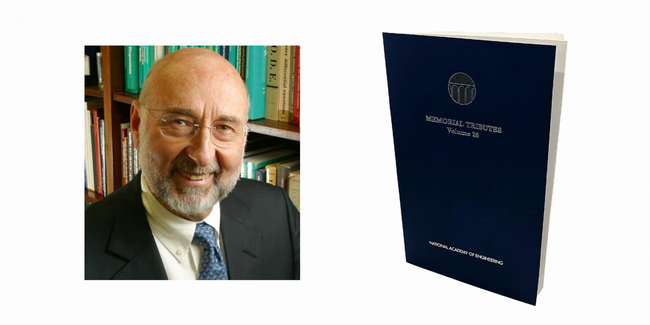
Interfacial Dynamics Pioneer Stephen H. Davis (1939–2021), Annual Review of Fluid Mechanics
Stephen H. Davis Memorial Tributes
2025 Stephen H. Davis Lecture
The 2025 Davis Lecture was held on Monday, October 27, at 4:00 PM, featuring a lecture by Michael Shelley of the Flatiron Institute. The lecture can be viewed here.

Michael Shelley
Director of the Center for Computational Biology
Flatiron Institute;
Lyttle Professor of Applied Mathematics
Courant Institute
New York University
Self-Organization, Flows, and Transport in (and of) Living Cells
Organisms organize their internal contents at the microscale through striking dynamical processes. In the early C. elegans embryo, pronuclei are positioned by the interplay of centrosomal arrays and molecular motors as the cell prepares for its first division. In female Drosophila, self-organized intracellular flows transport materials across growing egg cells, establishing functional asymmetries essential for development. And in males, ultralong sperm — as long as the organism itself — are packed and stored in a remarkable state of ordered unrest.
Shelley will describe his work at Flatiron in understanding these phenomena by tightly interfacing multiscale modeling and simulation with quantitative experiments. The theoretical frameworks draw on fluid and nonlinear dynamics, coarse-graining, and active matter, and show how applied mathematics can illuminate the biophysical mechanisms that enable living systems to build, move, and organize themselves.
2024 Stephen H. Davis Lecture
The 2024 Davis Lecture was held on Monday, October 21, at 4:00 PM, featuring a lecture by Kathleen Stebe of the University of Pennsylvania. The lecture can be viewed here.
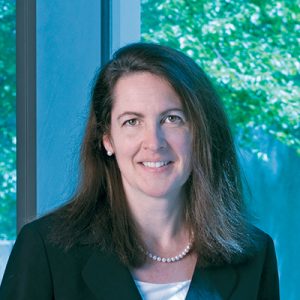 Kathleen J. Stebe
Kathleen J. Stebe

Richer and Elizabeth Goodwin Professor of Engineering and Applied Science
Department of Chemical and Biomolecular Engineering, University of Pennsylvania
Swimming in Nematic Liquid Crystals
Purcell's scallop theorem, which requires non-reciprocal motions for translation in isotropic fluids, needs adjustment for swimmers in nematic liquid crystals (NLC). Unlike isotropic fluids, where complex, non-reciprocal motions are essential, symmetric motions can induce translation in NLC due to its anisotropic nature. In NLC, symmetric flows create broken symmetries and elastic stresses that drive motion, expanding the range of effective swim strokes. This study outlines the conditions for swimming at low Reynolds numbers in NLC and explores how colloidal swimmers can access far-from-equilibrium defect dynamics that enhance swimming efficiency. The research, in collaboration with Miha Ravnik's group, reveals new possibilities for effective swimming in NLC environments.
2023 Stephen H. Davis Lecture
The 2023 Davis Lecture was held on Monday, October 23, at 4:00 PM, featuring a lecture by Michael D. Graham of the University of Wisconsin-Madison. The lecture can be viewed here.
 Michael D. Graham
Michael D. Graham

Steenbock Professor of Engineering and Harvey D. Spangler Professor,
Department of Chemical & Biological Engineering, Department of Mechanical Engineering, University of Wisconsin-Madison
Data, Dynamics, and Manifolds: Machine Learning Approaches for Modeling and Controlling Complex Flows
Fluid flows often exhibit chaotic or turbulent dynamics and require a large number of degrees of freedom for accurate simulation. Nevertheless, because of the fast damping of small scales by viscosity, these flows can in principle be characterized with a much smaller number of dimensions, as their long-time dynamics relax in state space to a finite-dimensional invariant manifold. Classical data-driven methods for dimension reduction approximate this manifold as a flat surface, but for complex systems, this approach is severely limited. We describe a data-driven reduced order modeling method, “Data-driven Manifold Dynamics” (DManD), that finds a nonlinear coordinate representation of the manifold using a machine-learning architecture called an autoencoder, then learns an ordinary differential equation for the dynamics on the manifold. Exploitation of symmetries substantially improves performance. We apply DManD to a range of systems including transitional turbulence, where we accurately represent the dynamics with 25 degrees of freedom, as compared to the 10 5 degrees of freedom of the direct simulation. We then use the model to efficiently train a reinforcement learning control policy that is highly effective in laminarizing the flow. We also introduce an autoencoder architecture that yields an explicit estimate of manifold dimension. DManD can be combined with a clustering algorithm to generate overlapping local representations that are particularly useful for intermittent dynamics.
2022 Stephen H. Davis Lecture
The 2022 Davis Lecture was held on Wednesday, May 25, at 3:00 PM, featuring a lecture by Grae Worster of the University of Cambridge. The lecture was recorded and can be viewed online here.
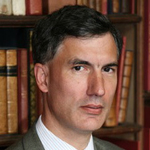 Grae Worster
Grae Worster

Professor of Fluid Dynamics, Department of Applied Mathematics and Theoretical Physics, University of Cambridge
The Dynamics of Super-absorbent Hydrogels
Worster's speech, "The Dynamics of Super-absorbent Hydrogels," will outline how he and his colleagues developed a new mathematical approach to model super-absorbent hydrogels, allowing for strongly nonlinear swelling while remaining linear in deviatoric strains, in effect treating hydrogels as instantaneously incompressible and linear elastic materials. Worster will describe this model and illustrate its features by solving simple examples of swelling spheres and transpiration through cylinders, and by analyzing different instabilities that can arise during swelling and drying. Worster will also introduce a hypothesis for a potential role of hydrogels in pumping water up very tall trees.
2021 Stephen H. Davis Lecture
The 2021 Davis Symposium was held on Monday, October 4, at 4:00 PM, featuring a lecture by Harry Swinney of the University of Texas at Austin. The lecture was recorded and can be viewed online here.
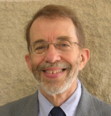 Harry Swinney
Harry Swinney

Professor, Physics, University of Texas, Austin
Crystallization in a periodically perturbed random granular medium
An understanding of crystal formation in a homogeneous disordered state can provide insights into crystallization in a fluid, such as the formation of ice crystals in water, which is still poorly understood. Experiments on packings of spheres over the past half century suggest that under repeated small disturbances, the spheres reach a “Random Close Packed” (RCP) state where the spheres occupy a maximum fraction of the container volume, 0.62-0.66. This talk will describe an experiment and numerical simulations on hard spheres that reveal that randomly packed spheres, after repeated small disturbances, occupy a well-defined volume fraction, 0.646±0.001. Further small disturbances lead to the nucleation of crystallites that, if they reach a critical size of 10-15 spheres, grow rapidly, and ultimately the container is filled with crystallites.
Inaugural Stephen H. Davis Lecture
The inagural Stephen H. Davis Symposium was held October 15, 2019, featuring lectures by John Hinch of University of Cambridge, G.M. "Bud" Homsy of University of Washington, Detlef Lohse of University of Twente, and Parviz Moin of Stanford University.
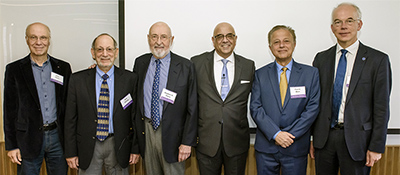
Symposium Speakers
 John Hinch John Hinch
John Hinch John Hinch

Professor, Fluid Dynamics, University of Cambridge
Levitation and Locomotion on an Air-table of Plates with Herringbone Grooves
Experiments in ESPCI in Paris and numerical simulations in Darmstadt have shown that plates with herringbone grooves in their base are accelerated on a smooth air-table in the direction that the chevron grooves point, while smooth plates on an air-table with herringbone grooves are accelerated in the opposite direction. Newton's third law? Not quite. Hinch will discuss a simple two-dimensional model that is constructed of the air flow down a long channel with pressure-controlled influx across the lower boundary: lubrication theory with inertia or boundary layers without an outer flow. Limiting cases are considered of low and high Reynolds numbers, and of small and large pressure drop down the channel compared with the pressure drop across the porous plate; all tested against numerical solutions. The levitation and locomotion forces are calculated, with a relatively simple prediction for the locomotive acceleration; which fits the experimental data with plausible excuses.
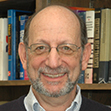 Bud HomsyG.M. "Bud" Homsy
Bud HomsyG.M. "Bud" Homsy

Affiliate Professor, Mechanical Engineering, University of Washington
Some Interfacial Flow Problems
Homsy will discuss his work on interfacial flows that was inspired by and influenced by Stephen H. Davis, including interfacial instabilities in the presence of chemical reactions (reactive viscous fingering); flows driven by interfacial electrical stresses (electrospraying, chaotic advection); and problems involving contact line dynamics (evaporation over rough surfaces and coating over topography).
 Detlef LohseDetlef Lohse
Detlef LohseDetlef Lohse

Professor, Physics of Fluids, University of Twente
Segregation in Multicomponent Droplet Evaporation
While the evaporation of a single component droplet is well understood, the richness of phenomena in multicomponent droplet evaporation keeps surprising. Lohse's talk will show and explain several such phenomena, namely evaporation-triggered segregation, due to either weak solutal Marangoni flow or gravitational effects, and the evaporation of ternary liquid droplet, which can lead to spontaneous nucleation of droplets consisting of a new phase. He will also show how this new phase can be utilized to self-lubricate the droplet in order to suppress the coffee stain effects. The research shown in this talk combines experiments, numerical simulations, and theory.
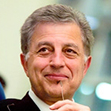 Parviz MoinParviz Moin
Parviz MoinParviz Moin

Founding Director of the Center for Turbulence Research and the Institute for Computational and Mathematical Engineering, Stanford University
Probing Turbulence Physics Using Numerical Simulation Databases - A Case Study in Predictive Science
With the exponential growth in computer power, high fidelity numerical simulations have provided unprecedented comprehensive datasets for the study of the mechanics of turbulent flows. Moin will share a brief review of fundamental research on the structure of wall-bounded turbulent flows with particular emphasis on the role played by large scale numerical simulations in conducting controlled experiments of discovery and the insights gained as a result. On the other hand, the early promise of direct numerical simulations to provide data to improve engineering models has not been fulfilled. He will expand on this in the context of lessons learned of the limitations of data science in the development of physical models.
